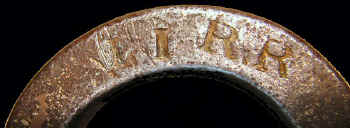LIRR LOCKS & KEYS
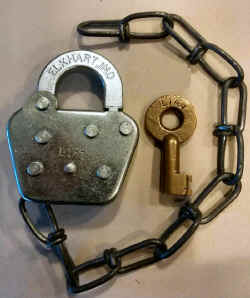 The
Long Island Sunrise Trail Chapter - National Railway Historical
Society: 185th Anniversary of the Long Island Rail Road published
2019
The
Long Island Sunrise Trail Chapter - National Railway Historical
Society: 185th Anniversary of the Long Island Rail Road published
2019
This article by Robert L. Myers illustrates a Brief
Overview of the Locks and Keys used by the Long Island Rail Road.

LIRR Switch Key
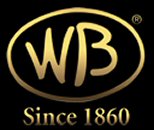 The Wilson Bohannan Lock Company (Marion, Ohio) has been manufacturing padlocks for almost 160 years. This makes them America's oldest continuous padlock maker. The founder Wilson Bohannan received his first padlock patent (No. 27,883) on April 17, 1860. In that patent his first name is spelled
'Wilsin', while in subsequent patents (Nos. 46,539, 55,047, 55,048, 67,401) his first name is spelled 'Wilson'. In the same year that his first patent was issued, he opened a small workshop in the rear of his Brooklyn home manufacturing padlocks. Outgrowing his home workshop, the company moved into larger quarters on Broadway and Kossuth Place, Brooklyn, New York in (or before) 1869.
The Wilson Bohannan Lock Company (Marion, Ohio) has been manufacturing padlocks for almost 160 years. This makes them America's oldest continuous padlock maker. The founder Wilson Bohannan received his first padlock patent (No. 27,883) on April 17, 1860. In that patent his first name is spelled
'Wilsin', while in subsequent patents (Nos. 46,539, 55,047, 55,048, 67,401) his first name is spelled 'Wilson'. In the same year that his first patent was issued, he opened a small workshop in the rear of his Brooklyn home manufacturing padlocks. Outgrowing his home workshop, the company moved into larger quarters on Broadway and Kossuth Place, Brooklyn, New York in (or before) 1869.
The company since then has moved its business in 1926 to Marion, Ohio where it currently is operating. Source: Wikipedia
Note: WB manufactured the small brass locks for the LIRR DE/DM's to lock up their fuel tanks. Their current logo is a WB in a circle on the front of the lock. Once a patent date was established, the shape of a lock may remain unchanged for 50 years, or more, if a successful model. Info: Robert Myers
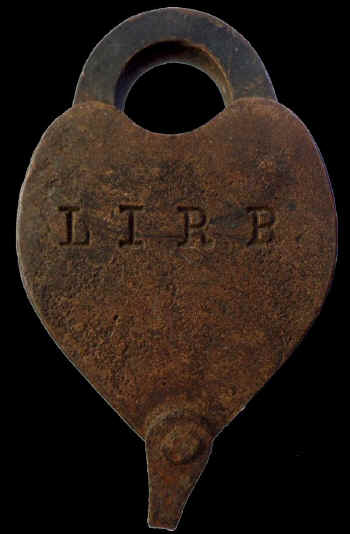
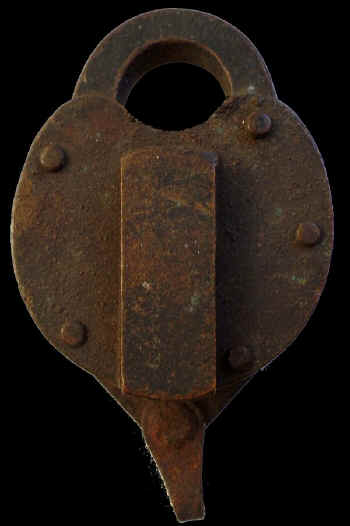
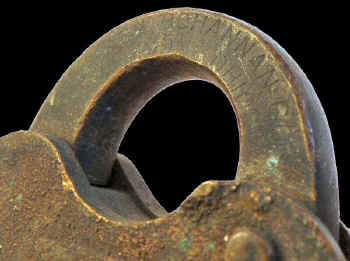
 Adams
& Westlake was founded in 1857 in Chicago, Illinois. In the
beginning, our company manufactured and sold railroad supplies and
hardware. With the opening of the American West and expansion of the
railroads, the company prospered and diversified. Adlake
became one of the largest suppliers of equipment to the transportation
industry in the world. In 1927, Adlake relocated to its
present site in Elkhart, Indiana. Today Adams & Westlake is
a leading custom manufacturer serving clients from all over the world
and in a broad range of industries. Source: Adlake.com
Adams
& Westlake was founded in 1857 in Chicago, Illinois. In the
beginning, our company manufactured and sold railroad supplies and
hardware. With the opening of the American West and expansion of the
railroads, the company prospered and diversified. Adlake
became one of the largest suppliers of equipment to the transportation
industry in the world. In 1927, Adlake relocated to its
present site in Elkhart, Indiana. Today Adams & Westlake is
a leading custom manufacturer serving clients from all over the world
and in a broad range of industries. Source: Adlake.com
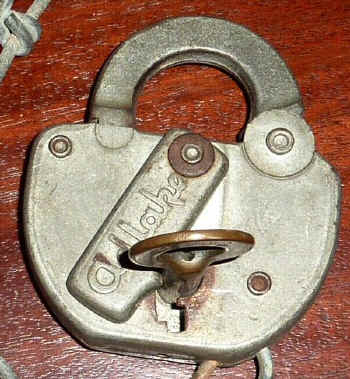
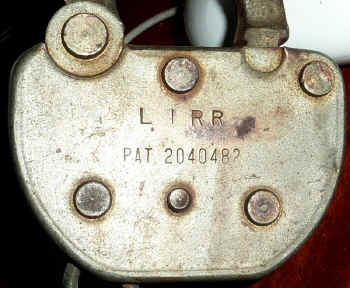
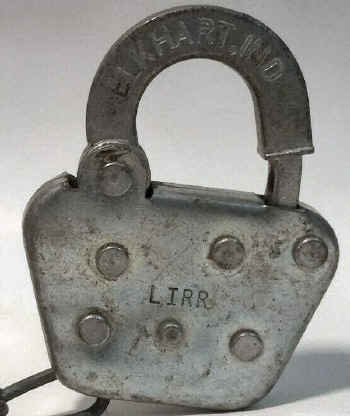
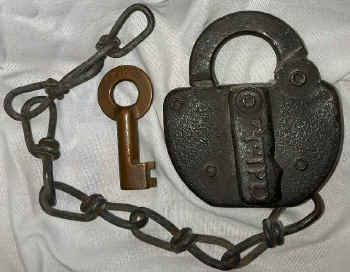
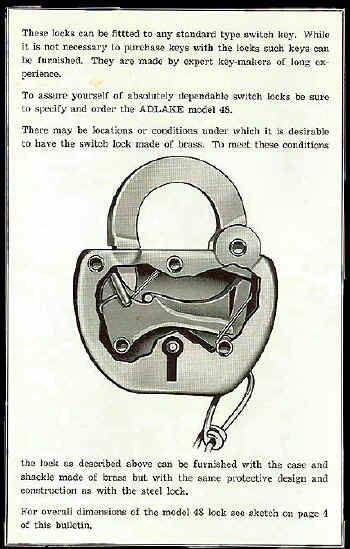
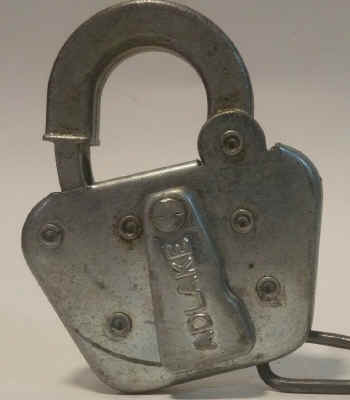
Adlake steel/aluminum switch locks came into use around the 1920's as they were less expensive than brass switch locks from WB. Info: Robert Myers
Note: Adlake indicates that brass lock options, based on locations/conditions were available. (left diagram)
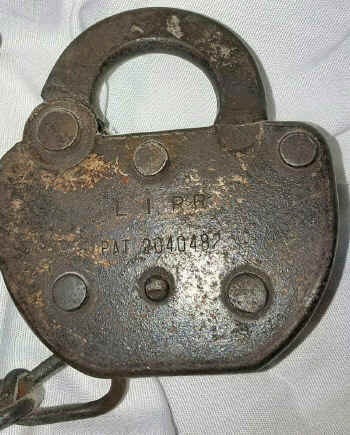
Some codes commonly stamped on railroad keys:
BCC Baggage Car Cellar
C Car
DCC Dining Car Cellar
ED Eastern Division
HC Hand Car
IH Ice House
MC Mail Car
M OF W Maintenance of Way
OB Oil Box
PH Pump House
RT Repair Track
R&B Roadway & Bridge
SCALE Scale
SIGNAL Signal
SY Stockyard
S Switch
TB Toolbox
TH Tool House
TR Tool Rack
WD Western Division
WS Water Service
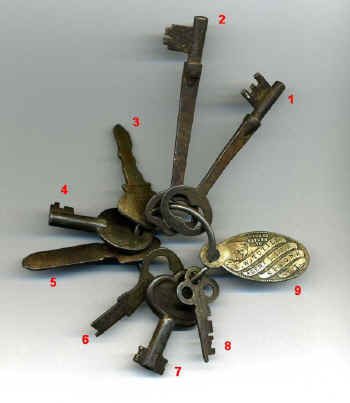
Agent's
Keys, Speonk, NY LIRR Keys and I.D. tag courtesy of Tom Collins, Dave
Keller archive
The two long keys (1,2)
are somewhat different versions of the old "coach
key" used to (literally) lock up the end storm doors of the
Pullman-Standard Coaches (2700, 2800 & 2900's)...all used the same
ones.
The
flat key is an old locker key(6)
from the Agents Office to keep "his" stuff, and two of the
shorter hollow barrel keys are signal keys.(4,7)
The other flat key, (not the old Ford ignition key (3), with less "teeth" to it is for an old Miller (Mfgr) 6 or 8 lever lock(5) with a "push" key(8), used for signal or other general purpose locks...possibly with baggage use (as in literally lock up the baggage or freight packages in a shed or room for that specific purpose). The tag(9) is great. Info: Robert Myers

